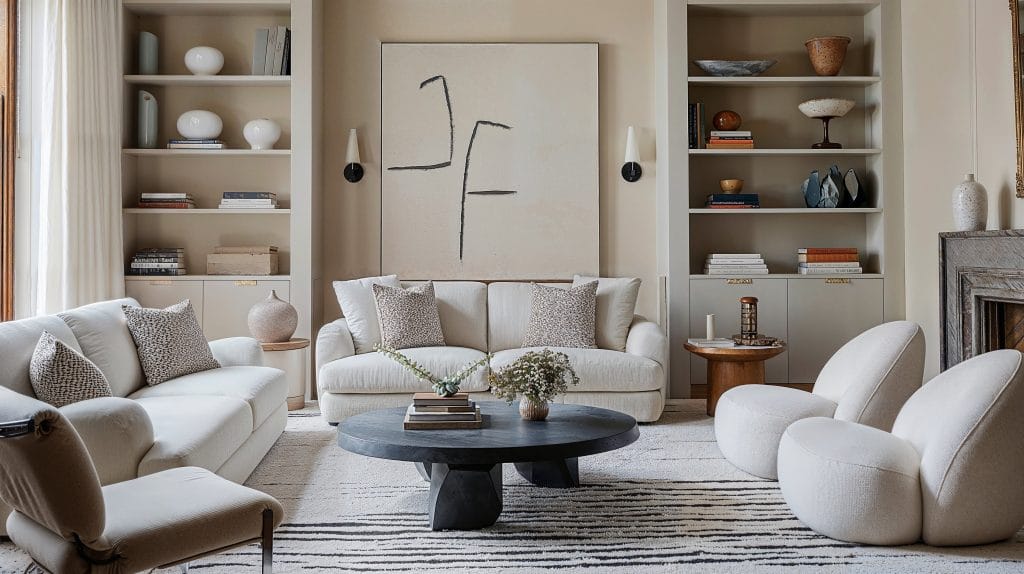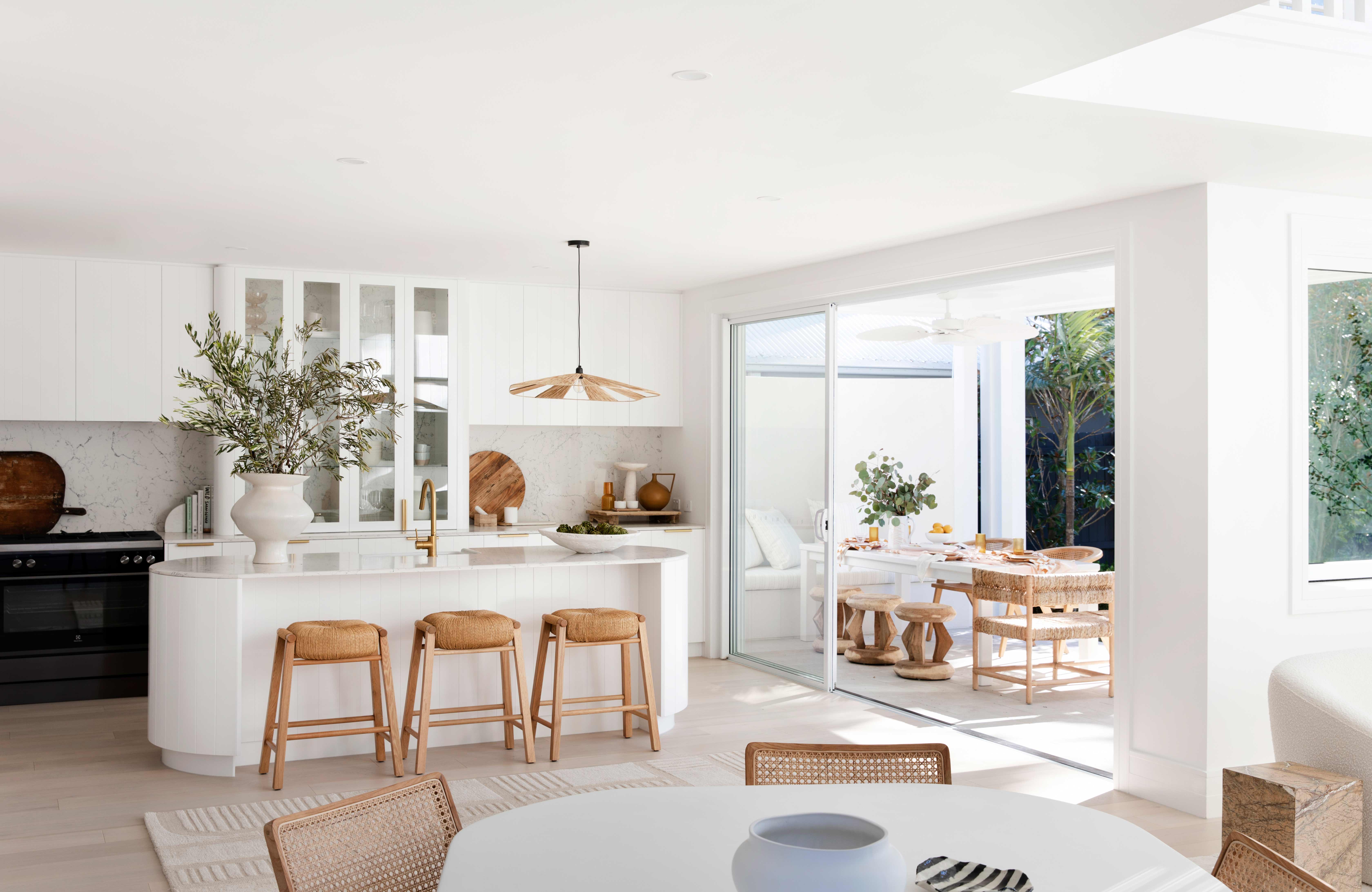Get inspired by professionals in luxury interior design to craft a beautiful space.
Transform Your Home With Important Principles of Interior Decoration and Appearances
By understanding the influence of color theory and the significance of structure and patterns, one can produce areas that are not only aesthetically attractive but additionally deeply individual. Accomplishing this equilibrium entails more than mere decor; it includes a calculated arrangement and an eager understanding of exactly how each aspect communicates within an area.
Comprehending Color Concept
Color concept is an essential facet of interior decoration that substantially influences state of mind, perception, and total visual. Comprehending the principles of shade concept enables developers to produce rooms that resonate psychologically with residents while meeting practical needs (miami interior design). Shades can be categorized right into three main types: primary, second, and tertiary. Each classification plays an essential duty in establishing harmony within a room.
The emotional influence of colors is profound; warm colors such as reds and oranges stimulate energy and warmth, while great tones like blues and environment-friendlies promote peace and peace. The use of corresponding colors enhances aesthetic passion, producing striking contrasts that can boost a room's charm.
Neutral shades, on the various other hand, offer as a versatile background, permitting various other style aspects to radiate. It is crucial to think about variables such as illumination and the area's function when picking a shade palette, as these can modify the assumption of shades throughout the day.
Inevitably, a well-considered color design can transform a space, cultivating a sense of convenience and design that straightens with the residents' choices. Proficiency of shade concept is, as a result, an important skill for any type of indoor designer aiming to produce unified and inviting environments.
Achieving Balance in Design
Exactly how can designers accomplish a sense of balance in their rooms? Achieving equilibrium in design is basic to developing harmonious interiors. Designers can use three primary kinds of balance: balanced, asymmetrical, and radial. Symmetrical balance includes setting up aspects uniformly around a main point, cultivating a feeling of order and serenity. This type commonly includes pairs of furnishings or art work, boosting visual security.
Asymmetrical balance, on the various other hand, depends on varying elements that still attain a cohesive look. This technique permits more dynamic and informal plans, offering interest while maintaining equilibrium. By carefully picking differing sizes, shades, and appearances, developers can produce an aesthetically engaging room that feels well balanced yet energetic.
Radial equilibrium highlights a central prime focus with components emitting exterior. This design is commonly seen in round formats, where furnishings and design create a natural surround that attracts the eye inward.
Eventually, accomplishing equilibrium requires thoughtful factor to consider of range, proportion, and the partnerships in between components. luxury interior design. By masterfully applying these equilibrium principles, designers can change rooms right into atmospheres that really feel both aesthetically pleasing and functionally unified, improving the general experience for occupants
Relevance of Spatial Understanding

A keen sense of spatial understanding allows developers to recognize centerpieces within a space, leading the audience's focus to key functions while maintaining an overall sense of unity. It additionally helps in the tactical positioning of illumination, which can significantly influence the perception of space and mood. Furthermore, comprehending spatial connections makes it possible for the designer to deal with the details requirements of inhabitants, guaranteeing that each area offers its intended purpose without endangering aesthetics.
Ultimately, spatial recognition is critical for maximizing the capacity of any type of indoor room. By meticulously considering the interaction in between dimensions, design, and feature, developers can develop settings that not just fulfill sensible demands however also evoke a sense of comfort and elegance, boosting the general living experience.
Incorporating Structure and Patterns
Welcoming a diverse variety of structures and patterns can substantially boost the aesthetic and tactile allure of an interior area. The calculated use numerous products-- such as wood, metal, material, and rock-- produces depth and rate of interest, making visit this site right here an area really feel more welcoming and vibrant. Incorporating smooth surface areas with harsh textures can develop an equilibrium that attracts the eye and involves the senses.
When including patterns, take into consideration both scale and rep. Large patterns can act as focal points, while smaller, refined layouts can complement other components without frustrating the room. Layering patterns, such as pairing floral paddings click here to find out more with striped throws, includes intricacy and a sense of harmony if implemented thoughtfully.
It is also vital to preserve a natural shade combination, making certain that textures and patterns interact as opposed to compete for focus. By choosing a couple of essential appearances and patterns, you can create a combined aesthetic that mirrors your personal design while boosting the general atmosphere of the area. Eventually, the careful unification of these components can transform an ordinary space right into an advanced environment rich with personality and heat.
Personalizing Your Space
Producing a room that shows your individuality is important to accomplishing a really welcoming atmosphere. Personalization in indoor style enables you to infuse your distinct style and interests right into your home, changing it from a mere sanctuary right into a haven that talks to who you are. Begin by selecting a shade combination that reverberates with your emotions-- vibrant shades can invigorate, while soft tones offer tranquility.
Include artwork and design that mirror your interests, whether it be travel, nature, or abstract concepts. Displaying personal collections, such as books, photos, or mementos, can evoke treasured memories and create prime focus within an area. Furthermore, take into consideration customizing useful pieces, like upholstered furniture, to line up with your aesthetic choices.

Final Thought
Finally, the change of a home via the essential concepts of interior decoration and looks necessitates an extensive understanding of shade concept, balance, spatial recognition, texture, and personalization. Each aspect adds significantly to creating a harmonious and useful living environment - miami interior design. By thoughtfully integrating these principles, individuals can improve the aesthetic charm and emotional vibration of their spaces, eventually promoting a home that shows distinct identities while offering comfort and functionality